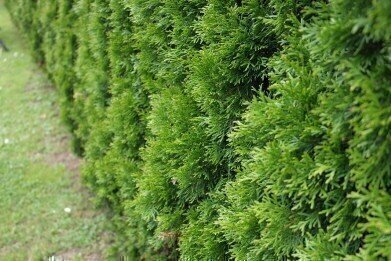Air Clean Up
Are Hedges the Solution to Urban Pollution?
Jun 25 2017
A new collaborative study from the UK, Europe and the USA has suggested that low hedges are far more effective at curbing pollution than tall trees in certain urban environments.
Concentrating in particular on streets where large buildings were close to the passing traffic, the report found that planting trees could actually exacerbate pollution. Hedges, on the other hand, were much better at encouraging airflow and dispersing contaminants effectively.
A green approach to urban planning
In addition to a raft of governmental measures aimed at improving air quality and reducing transport-related pollution (such as the introduction of ultra-low emission zones [ULEZs], the phasing out of speed bumps and the prohibition on engine idling), urban planners are also turning to Mother Nature for help.
The planting of trees has long been considered as an efficient method of aiding the environment. As well as consuming carbon dioxide (CO2) and producing oxygen, trees can also help to disperse pollutants by creating ventilation and causing turbulence in city streets.
However, they can also have a detrimental effect on air quality in certain situations, as well. In narrow streets, a tight tree canopy can obstruct airflow and thus leave nowhere for the contamination to go. As a result, the debate over whether trees actually make urban pollution worse has been going on for some time.
A comprehensive approach to the question
In a bid to provide a definitive answer to the issue, a report (published in the journal Atmospheric Environment) reviewed a multitude of studies relating to the impact that trees and hedges have on air quality in a variety of different urban settings.
While the authors found that trees could certainly have a beneficial impact on air quality in “open road” conditions (i.e. where there is a lack of tall buildings and air can flow freely), their presence in a “street canyon” environment (i.e. where tall buildings were grouped together at a short distance from the road) was almost invariably damaging.
Hedges, by contrast, were thought to be far more effective at hindering airflow underneath but allowing it above, thus helping to reduce pollution levels in street canyon situations. While the review acknowledged that there was limited data available on hedges in these kinds of streets, it commented that the signs were largely positive that they could curb pollution levels.
Food for thought
The authors of the study conclude by saying that their findings show urban planners should utilise pilot modelling investigations to give a clearer overview of how specific kinds of vegetation will affect airflow, in order to achieve optimal air quality.
“We are currently performing targeted field investigations to quantify the effects of different types of green barriers along busy open-road sides,” explained Professor Prashant Kumar, lead author on the topic. “This will help to develop evidence-based guidelines to support future urban planning and the public to make informed choices to 'green up' their surrounding environments.”
Kumar and his team also made mention of the phenomenon of green buildings, commenting that while they are not as effective at reducing pollution as trees and hedges, they should still comprise a viable facet of any responsible and sustainable urban planning agenda.
Events
Apr 22 2024 Hannover, Germany
Apr 23 2024 Kuala Lumpur, Malaysia
Apr 24 2024 Sao Paulo, Brasil
May 05 2024 Seville, Spain
May 13 2024 Munich, Germany














